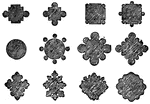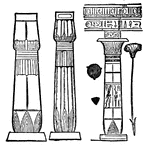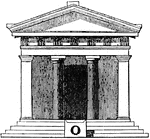
Antae
"Square pillars, which were commonly joined to the sidewalls of a building, being placed on each side…

Antae
"Square pillars, which were commonly joined to the sidewalls of a building, being placed on each side…
Rich Enrichment Bead Moulding
The rich enrichment bead moulding is a Renaissance design of semi-circles. These designs were typically…
Rich Enrichment Bead Moulding
The rich enrichment bead moulding is a Renaissance design of semi-circles. These designs were typically…
Rich Enrichment Bead Moulding
The rich enrichment bead moulding is a Renaissance design of semi-circles. These designs were typically…
Rich Enrichment Bead Moulding
The rich enrichment bead moulding is a Renaissance design of semi-circles. These designs were typically…
Rich Enrichment Bead Moulding
The rich enrichment bead moulding is a Renaissance design of semi-circles. These designs were typically…

A Bishop Sitting on a Bishop's Throne Called a Cathedra
Illustration of a bishop sitting on an ornately decorated cathedra. A crosier, pastoral staff, rests…

A Capital from Karnak
"In their private dwellings the Egyptians sometimes used graceful columns and the true arch (both of…

Modern Caryatid
The modern caryatid is two female figures side by side used as supports in place of columns.

Modern Caryatid
The modern caryatid is two female figures side by side used as supports in place of columns.

Modern Caryatid
The modern caryatid is two female figures side by side used as supports in place of columns.
Modern Caryatid
The modern caryatid is two female figures side by side used as supports in place of columns.
Modern Caryatid
The modern caryatid is two female figures side by side used as supports in place of columns.
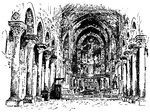
Cathedral of Monreale - Interior View
Illustration of the Cathedral at Monreale, near Palermo. It is an example of Sicilian and Norman architecture.…
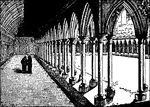
A Cloister at a French Monastery from the Middle Ages
This illustration shows one fragment of a French cloister built in the Middle Ages. The architecture…
Clustered Pier
Architecture of Cathredals in England. A clustered pier at the Worcester Cathedral, Early English style.
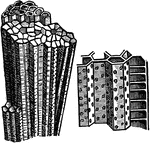
Compound Coral
A characteristic a-separate compound coral. The columns are prismatic and their walls pierced by regular…

Mosque of Cordoba
The Mosque of Cordoba was a former mosque and today is a Roman Catholic Cathedral located in the Andalusian…
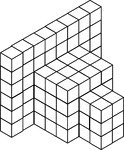
108 Stacked Congruent Cubes
Illustration of 108 congruent cubes stacked at various heights. A 3-dimensional representation on a…
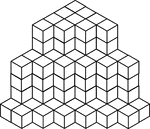
117 Stacked Congruent Cubes
Illustration of 117 congruent cubes stacked in columns of one, four, and six. A 3-dimensional representation…

128 Stacked Congruent Cubes
Illustration of 128 congruent cubes stacked so they form a rectangular solid that measures 4 by 4 by…
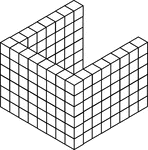
132 Stacked Congruent Cubes
Illustration of 132 congruent cubes stacked in 22 columns of 6 in the shape of a U. A 3-dimensional…
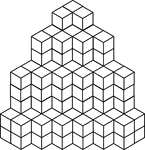
154 Stacked Congruent Cubes
Illustration of 154 congruent cubes stacked in columns increasing from one to four. A 3-dimensional…
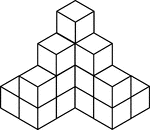
16 Stacked Congruent Cubes
Illustration of 16 congruent cubes stacked at various heights. A 3-dimensional representation on a 2-dimensional…
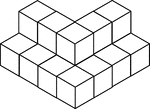
17 Stacked Congruent Cubes
Illustration of 17 congruent cubes stacked in ones and twos in the shape of a V. A 3-dimensional representation…

2 Congruent Cubes
Illustration of two congruent cubes that are tangent along an edge. A 3-dimensional representation on…

20 Stacked Congruent Cubes
Illustration of 20 congruent cubes stacked in twos and threes. A 3-dimensional representation on a 2-dimensional…
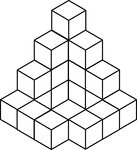
20 Stacked Congruent Cubes
Illustration of 20 congruent cubes stacked at various heights. A 3-dimensional representation on a 2-dimensional…
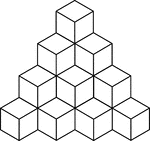
20 Stacked Congruent Cubes
Illustration of 20 congruent cubes stacked at heights increasing from 1 to 4 cubes. A 3-dimensional…
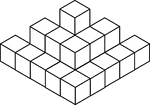
22 Stacked Congruent Cubes
Illustration of 22 congruent cubes stacked in ones, twos, and threes. A 3-dimensional representation…
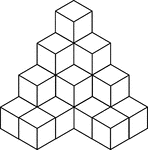
22 Stacked Congruent Cubes
Illustration of 22 congruent cubes stacked at various heights. A 3-dimensional representation on a 2-dimensional…
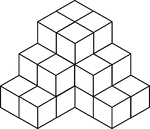
24 Stacked Congruent Cubes
Illustration of 24 congruent cubes stacked at various heights to resemble steps. A 3-dimensional representation…
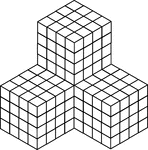
256 Stacked Congruent Cubes
Illustration of 256 congruent cubes stacked so they form 4 larger cubes that measures 4 by 4 by 4 each.…
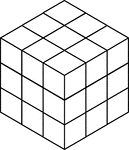
27 Stacked Congruent Cubes
Illustration of 27 congruent cubes stacked to resemble a larger cube that measures three by three by…

27 Stacked Congruent Cubes
Illustration of 27 congruent cubes stacked at various heights in the shape of a W. A 3-dimensional representation…

28 Congruent Cubes Placed in the Shape of a Square
Illustration of 28 congruent cubes placed in the shape of a square. A 3-dimensional representation on…
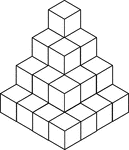
30 Stacked Congruent Cubes
Illustration of 30 congruent cubes stacked in decreasing heights. A 3-dimensional representation on…

33 Stacked Congruent Cubes
Illustration of 33 congruent cubes stacked at various heights in a zigzag pattern. A 3-dimensional representation…
35 Stacked Congruent Cubes
Illustration of 35 congruent cubes stacked in ones and twos in the shape of a W. A 3-dimensional representation…

35 Stacked Congruent Cubes
Illustration of 35 congruent cubes stacked at various heights. A 3-dimensional representation on a 2-dimensional…

36 Stacked Congruent Cubes
Illustration of 36 congruent cubes stacked at various heights with outer edges forming a square. A 3-dimensional…

36 Stacked Congruent Cubes
Illustration of 36 congruent cubes stacked to resemble a 1 by 1 by 1 cube on a 2 by 2 by 2 cube on a…

39 Stacked Congruent Cubes
Illustration of 39 congruent cubes stacked at various heights. A 3-dimensional representation on a 2-dimensional…

4 Stacked Congruent Cubes
Illustration of 4 congruent cubes stacked in ones and twos. A 3-dimensional representation on a 2-dimensional…

50 Stacked Congruent Cubes
Illustration of 50 congruent cubes stacked at various heights. A 3-dimensional representation on a 2-dimensional…

56 Stacked Congruent Cubes
Illustration of 56 congruent cubes stacked in twos in the shape of a square. A 3-dimensional representation…

56 Stacked Congruent Cubes
Illustration of 56 congruent cubes stacked in heights of 1, 4, and 5 cubes that form a zigzag pattern.…

57 Stacked Congruent Cubes
Illustration of 57 congruent cubes stacked in heights of 1 and 5 cubes that form a zigzag pattern. A…
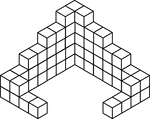
59 Stacked Congruent Cubes
Illustration of 59 congruent cubes stacked at various heights. A 3-dimensional representation on a 2-dimensional…
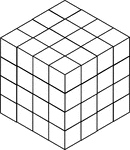
64 Stacked Congruent Cubes
Illustration of 64 congruent cubes stacked so they form a cube that measures 4 by 4 by 4. A 3-dimensional…

65 Stacked Congruent Cubes
Illustration of 65 congruent cubes stacked at heights increasing from 1 to 5 cubes. A 3-dimensional…
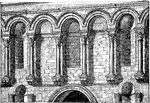
Entrance Façade of Diocletian's Palace
"Fragment of the Entrance-Façade of the Palace of Diocletian at Spalatro. The tendency of the…
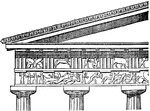
Doric Entablature
"Doric Entablature. E, entablature: a, epistyle or architrave; b, frieze; c, cornice." -Whitney, 1911
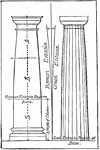
Entasis
"In architecture, the swelling or outward curve of the profile of the shaft of a column. Entasis. e…

Erechtheum
"The 'house of Erechtheus'; a temple of Ionic order on the Acropolis of Athens, noted as one of the…
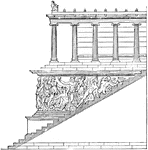
Frieze of Altar at Pergamon
The stairway of the great altar at Pergamon in Ancient Greece shows a frieze. A frieze is a sculpture…

